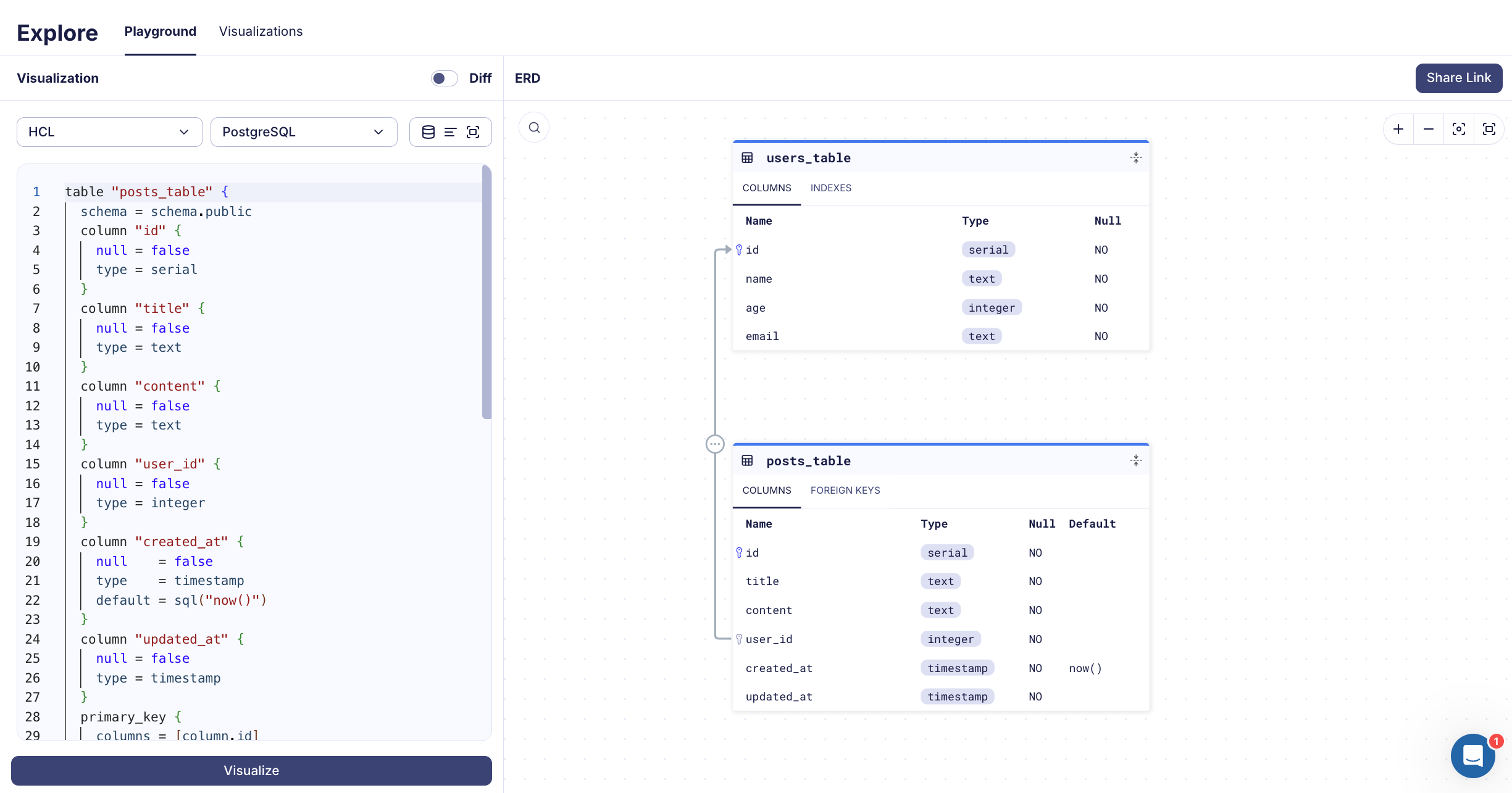Visualizing Drizzle Schemas
Visualizing a database schema using an Entity-Relationship Diagram (ERD) tool is helpful in providing a clear and intuitive representation of the database structure, making it easier to understand the relationships and dependencies between different entities.
With Atlas, you can easily visualize your Drizzle schema.
Getting started with Atlas and Drizzle
To set up, follow along the getting started guide for Drizzle and Atlas.
Project Setup
Drizzle Schema
Assume we have the following Drizzle src/schema.ts file:
import { integer, pgTable, serial, text, timestamp } from 'drizzle-orm/pg-core';
export const usersTable = pgTable('users_table', {
id: serial('id').primaryKey(),
name: text('name').notNull(),
age: integer('age').notNull(),
email: text('email').notNull().unique(),
});
export const postsTable = pgTable('posts_table', {
id: serial('id').primaryKey(),
title: text('title').notNull(),
content: text('content').notNull(),
userId: integer('user_id')
.notNull()
.references(() => usersTable.id, { onDelete: 'cascade' }),
createdAt: timestamp('created_at').notNull().defaultNow(),
updatedAt: timestamp('updated_at')
.notNull()
.$onUpdate(() => new Date()),
});
Visualizing
Now that we are all setup, we can visualize our Drizzle models by running the inspect command
with the -w flag:
atlas schema inspect --env local --url env://schema.src -w
The target URL env://schema.src will point to the src/schema.ts file though atlas.hcl.
If you are not logged in, the output should be similar to:
? Where would you like to share your schema visualization?:
▸ Publicly (gh.atlasgo.cloud)
Your personal workspace (requires 'atlas login')
Our browser should open:
Amazing! Now you can easily view and share your schema. Logged in users can also privately create schemas and save them for future use.
